Trickle Charger (Portable Charging Cable)
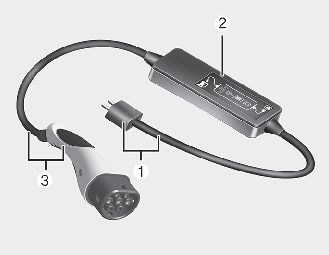
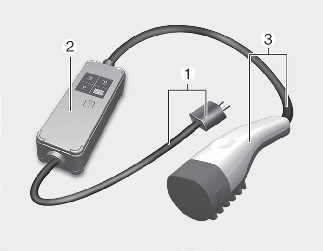
Trickle charger can be used if AC Charger is unavailable.
-
Plug and cable
-
Control box (ICCB)
-
Charging connector/cable
How to Connect Portable Charging Cable (ICCB: In-Cable Control Box) (Type A)
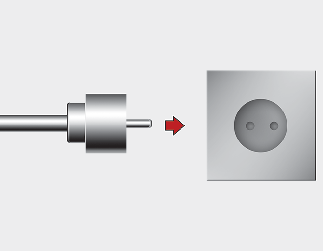
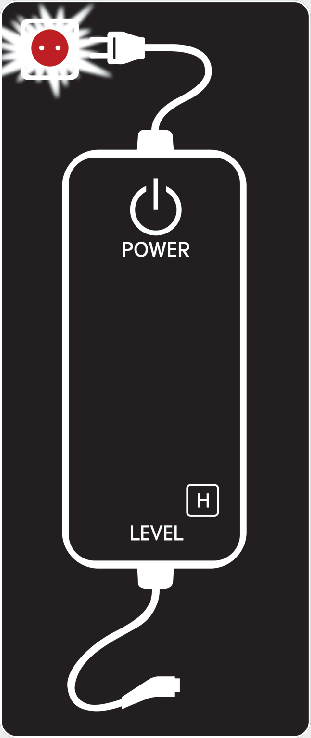
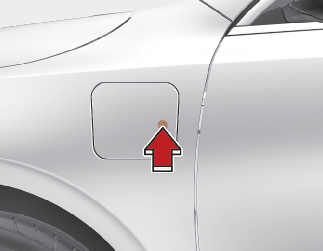

The charging door does not open when the theft alarm system is armed.
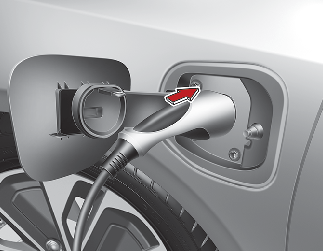
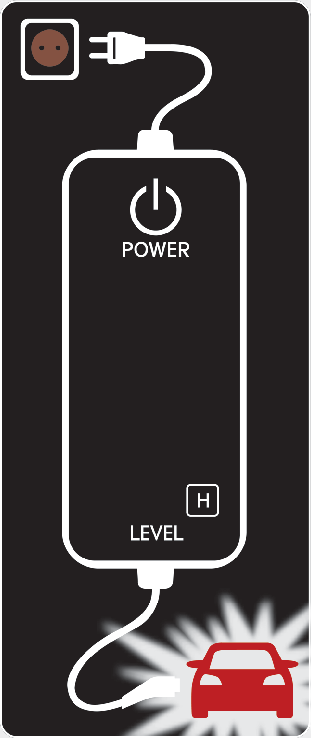
Then, insert it into the charging inlet, until you hear a click sound. If it is not fully connected, improper connection between the charging connector and the charging terminals are a potential fire hazard.
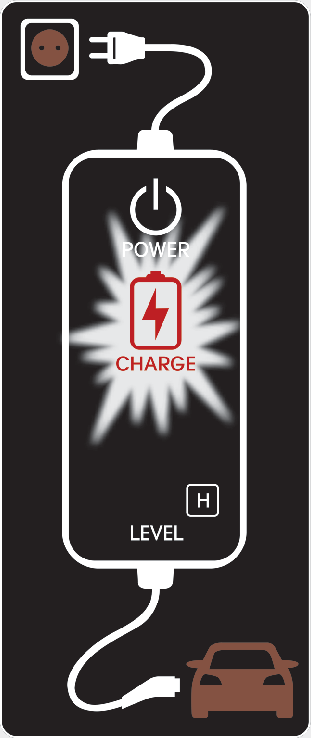

Charging does not occur when the indicator is OFF. When the charging connector is not connected properly, reconnect the charging cable to charge.

-
The charging is in progress only with the shift lever is in P (Park). Charging the battery with the ENGINE START/STOP button in the ACC position is possible. However, it may discharge the 12-V battery. Thus, if possible, charge the battery with the ENGINE START/STOP button in the OFF position.
-
Moving the shift lever from P (Park) to R (Reverse)/N (Neutral)/D (Drive) stops the charging process. To restart the charging process, move the shift lever to P (Park), press the ENGINE START/STOP button to the OFF position, and disconnect the charging cable. Then, connect the charging cable and restart the charging process.
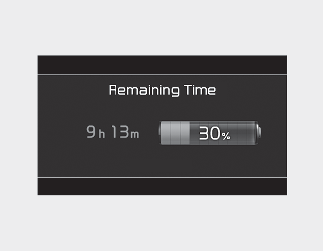
How to Connect Portable Charging Cable (ICCB: In-Cable Control Box) (Type B)

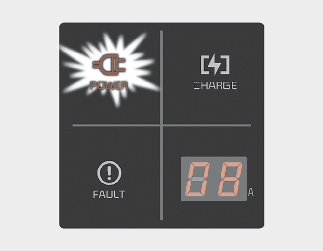


The charging door does not open when the theft alarm system is armed.

Then, insert it into the charging inlet, until you hear a click sound. If it is not fully connected, improper connection between the charging connector and the charging terminals are a potential fire hazard.
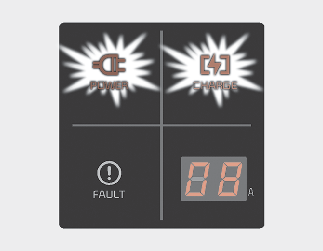

Charging does not occur when the indicator is OFF. When the charging connector is not connected properly, reconnect the charging cable to charge.

-
The charging is in progress only with the shift lever is in P (Park). Charging the battery with the ENGINE START/STOP button in the ACC position is possible. However, it may discharge the 12-V battery. Thus, if possible, charge the battery with the ENGINE START/STOP button in the OFF position.
-
Moving the shift lever from P (Park) to R (Reverse)/N (Neutral)/D (Drive) stops the charging process. To restart the charging process, move the shift lever to P (Park), press the ENGINE START/STOP button to the OFF position, and disconnect the charging cable. Then, connect the charging cable and restart the charging process.

Charging Status Indicator Lamp for Portable Charging Cable (Type A)
|
Control Box |
Indicator |
Details |
|
|---|---|---|---|
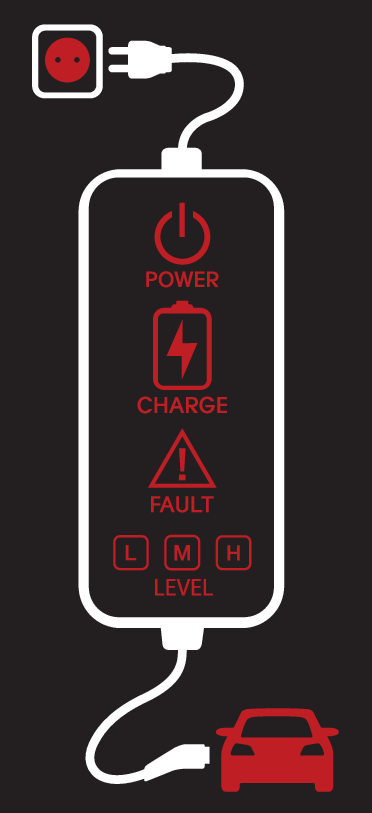 |
PLUG |
 (Green) |
On : Power on Blink : Plug temperature sensor failure |
 (Red) |
On : Plug high temperature protection Blink : Plug high temperature warning |
||
|
POWER |
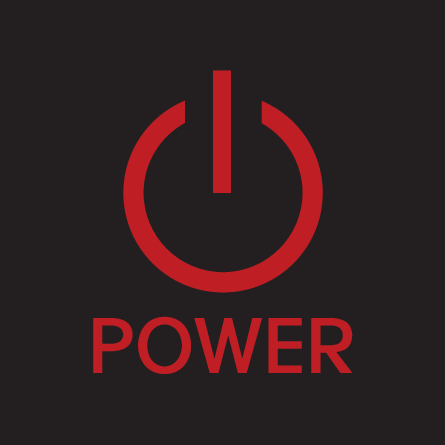 |
On : Power on |
|
|
CHARGE |
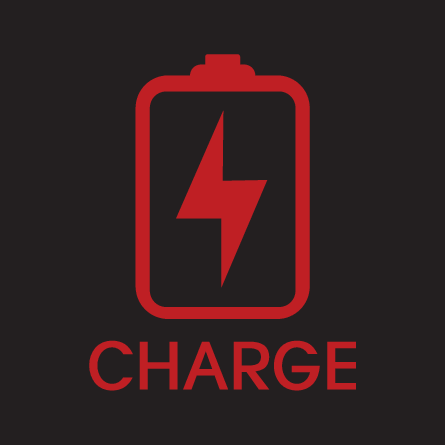 |
Blink : Charging In power saving mode, only the CHARGE indicator is illuminated. |
|
|
FAULT |
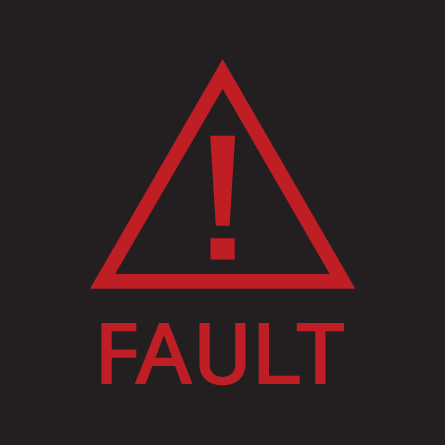 |
Blink : Charging interrupted |
|
|
CHARGE LEVEL |
 |
Charging current 12A |
|
 |
Charging current 10A |
||
 |
Charging current 8A |
||
|
VEHICLE |
 (Green) |
Charging connector plugged |
|
 (Blue) |
Charging |
||
 (Red) |
Blink : Charging impossible |
||
|
NO |
Control Box |
Status / Diagnosis / Countermeasure |
NO |
Control Box |
Status / Diagnosis / Countermeasure |
|---|---|---|---|---|---|
|
1 |
 |
Have the system inspected by a professionalworkshop. Kia recommends to visit anauthorized Kia dealer/service partner. |
2 |
 |
|
|
3 |
 |
|
4 |
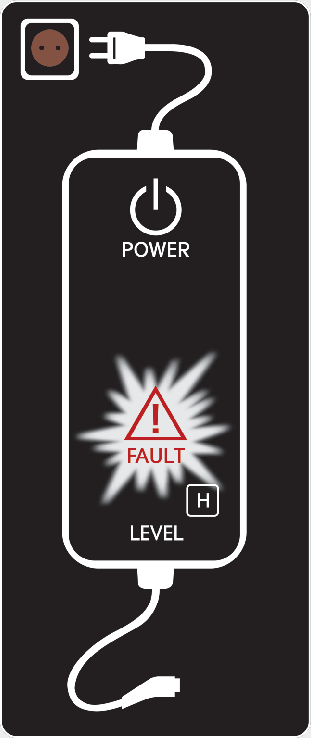 |
Have the system inspected by a professional workshop. Kia recommends to visit an authorized Kia dealer/service partner. |
|
5 |
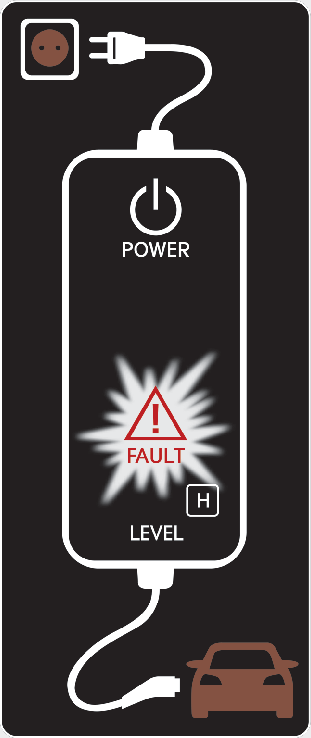 |
Have the system inspected by a professional workshop. Kia recommends to visit an authorized Kia dealer/service partner. |
6 |
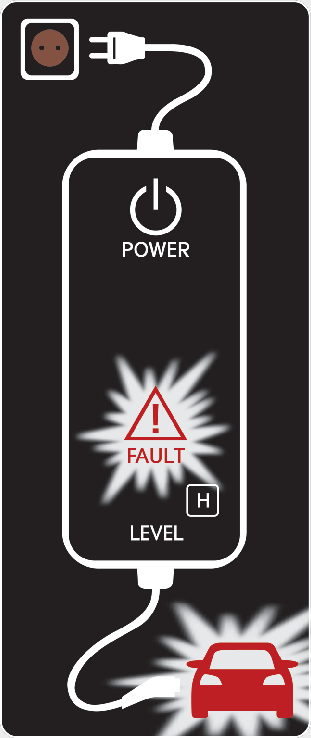 |
Have the system inspected by a professional workshop. Kia recommends to visit an authorized Kia dealer/service partner. |
|
7 |
 |
Have the system inspected by a professional workshop. Kia recommends to visit an authorized Kia dealer/service partner. |
8 |
 |
|
Charging Status Indicator Lamp for Portable Charging Cable (Type B)
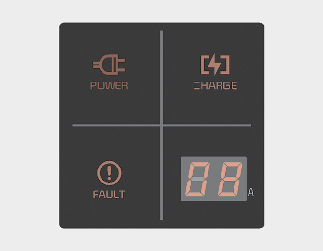
|
Indicator |
Details |
|
|---|---|---|
|
POWER |
On : Power on |
|
|
CHARGE |
On : Charge Blink : Current limit due to high plug temperature or high internal temperature |
|
|
FAULT |
Blink : Charging interrupted |
|
|
CHARGE LEVEL |
12 |
12 A |
|
10 |
10 A |
|
|
08 |
8 A |
|
|
06 |
6 A |
|
|
The charging current changes whenever the button (1) is pressed for less than 1 sec with the charger plugged into an electrical outlet but not the vehicle. 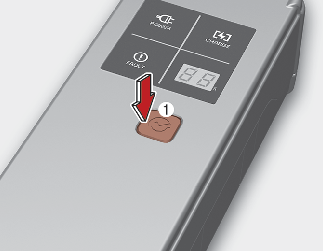 |
||
|
Indicator |
Details |
||
|---|---|---|---|
|
Error code |
On : Error while charging/ Error during self-diagnosis |
||
|
Error code |
Item |
Cause |
|
|
E1 |
CP communication |
Vehicle communication error |
|
|
E2 |
Leakage |
Current leakage |
|
|
E3 |
Charger error |
||
|
E4 |
Plug temperature |
Plug overtemperature warning |
|
|
E5 |
Plug temperature failure |
||
|
E6 |
Charger error |
||
|
E7 |
Overcurrent |
Charging overcurrent warning |
|
|
E8 |
Internal temperature |
Charger overheating |
|
|
E9 |
Charger error |
||
|
F1 |
Relay fusion |
Charger error |
|
|
F2 |
GM/I |
Poor grounding of outlet |
|
|
F3 |
SMPS Power failure |
SMPS error (voltage failure) |
|
|
F4 |
SMPS error (abnormal voltage) |
||
|
F5 |
CP voltage error |
CP (-) voltage error |
|
|
F6 |
CP (+) voltage error |
||
|
F7 |
Temperature sensor error |
Plug temperature sensor error |
|
|
F8 |
PCB internal temperature sensor error |
||
Status/Diagnosis/Countermeasure (Type B)

-
Charging connector plugged into vehicle (POWER Green ON)
-
Plug connected to an electric outlet (POWER Green ON)

-
Charge indicator (POWER Green ON/CHARGE Blue ON)
-
Charging current
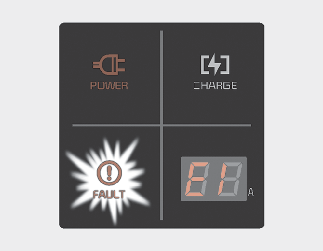
-
Abnormal temperature
-
ICCB (In-Cable Control Box) failure

-
Diagnostic device failure
-
Current leakage
-
Abnormal temperature
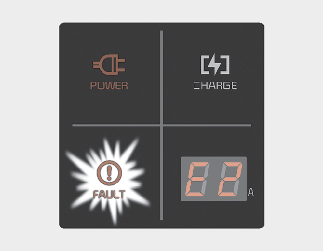
-
After disconnecting and reconnecting the power plug, press and release the button for 2 seconds or longer to clear the error.
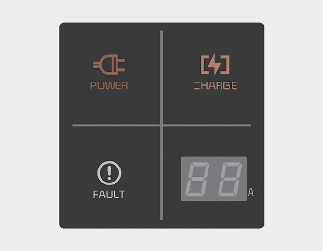
-
Charge level indicator is turned off if there is no status change for more than 1 minute.
How to Disconnect Charging Connector in Emergency
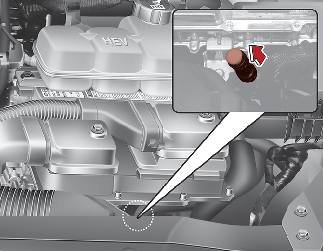
If the charging connector does not disconnect due to battery discharge and/or failure of the electric system, open the hood and slightly pull the emergency cable. The charging connector will then disconnect.
If the charging door is not opened immediately with the emergency cable in operation, press the charging door lightly and pull the emergency cable again.
The charging cable lock may not work properly when foreign materials such as dust enters the cable or the cable is encrusted with ice.
In that case, the charging cable may not be disconnected from the car.
If this happens, open the hood and pull the emergency cable lightly 2 to 3 times before starting charging.
Checking Charging Status
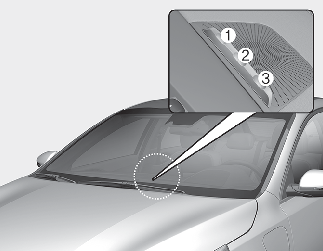
You can check the charging status at the outside of vehicle when charging or using (it is not driving status) the high-voltage battery.
It takes about 2.3 hours or more to complete charging.
For more information about charging status indicator, refer to More Details.
Charge cable storage
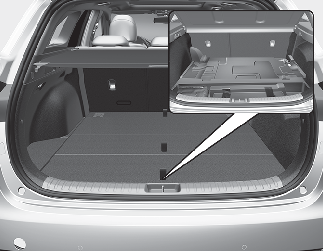
We recommend that the trickle charger cable should be put in the storage box after use.
How to Disconnect Portable Charging Cable (ICCB: In-Cable Control Box)

In order to disconnect the charging connector, unlock the doors to unlatch the charging connector lock system. If not, the charging connector and the vehicle's charging inlet may be damaged.
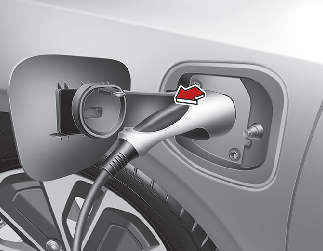
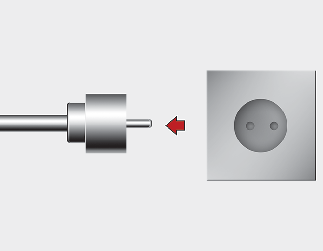
Precautions for Portable Charging Cable (ICCB: In-Cable Control Box)
-
Use the portable charging cable that is certified by Kia.
-
Do not try to repair, disassemble, or adjust the portable charging cable.
-
Do not use an extension cord or adapter.
-
Stop using immediately if failure warning light occurs.
-
Do not touch the plug and charging connector with wet hands.
-
Do not touch the terminal part of the AC charging connector and the AC charging inlet on the vehicle.
-
Do not connect the charging connector to voltage that does not comply with regulations.
-
Do not use the portable charging cable if it is worn out, exposed, or there exists any type of damage on the portable charging cable.
-
If the ICCB case and AC charging connector is damaged, cracked, or the wires are exposed in any way, do not use the portable charging cable.
-
Do not let children operate or touch the portable charging cable.
-
Keep the control box free of water.
-
Keep the AC charging connector or plug terminal free of foreign substances.
-
Do not step on the cable or cord. Do not pull the cable or cord and do not twist or bend it.
-
Do not charge when there is lightning.
-
Do not drop the control box or place a heavy object on the control box.
-
Do not place an object that can generate high temperatures near the charger when charging.
-
Charging with the worn out or damaged household electric outlet can result in a risk of electric shock. If you are in doubt to the household electric outlet condition, have it checked by a licensed electrician.
-
Stop using the portable charging cable immediately if the household electric outlet or any components is overheated or you notice burnt odors.
Actions to be taken for electric vehicle charging issues
When you cannot charge the high voltage battery after connecting the charger, check the following:
-
Check the charging settings for the vehicle.
(e.g. when scheduled charging is set, charging is not initiated immediately when the AC charger or portable charger is connected.)
-
Check the operation status of the AC charger, portable charger.
(Status of portable charger)
* Actual method for indicating the charging status may vary in accordance with the charger manufacturer.
-
When the vehicle does not charge and a warning message appears on the instrument cluster, check the corresponding message.
-
If the vehicle is properly charged when charged with another normally working charger, contact the charger manufacturer.
-
If the vehicle does not charge when charged with another normally working charger, we recommend that you contact an authorized Kia dealer for inspection.